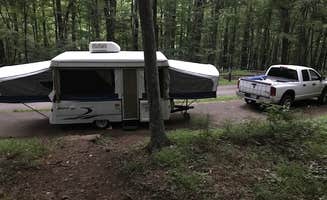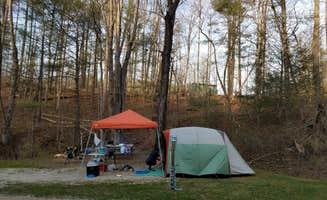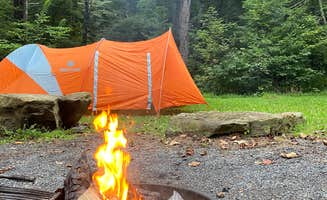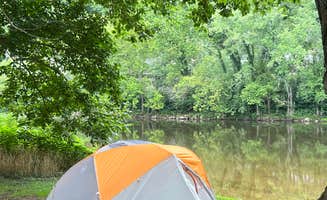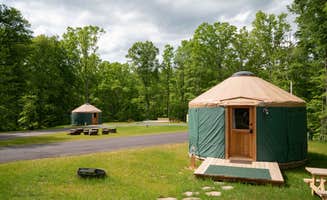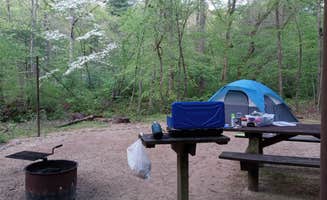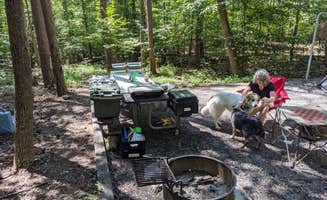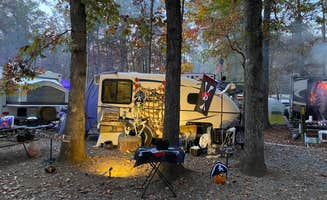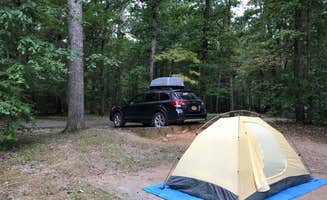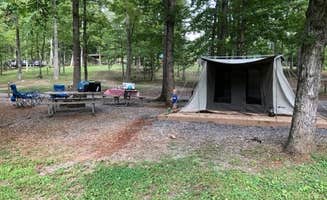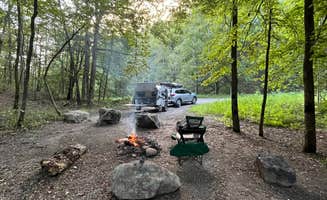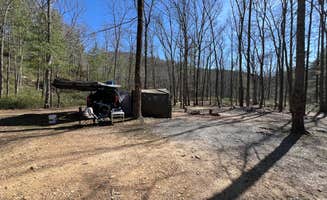The Blue Ridge Mountains around Thaxton, Virginia offer a range of camping options at elevations between 1,000-3,000 feet, creating distinct microclimates throughout the area. Summer temperatures typically range from 65-85°F during the day, dropping 15-20 degrees at night, especially at higher elevations. Winter camping is limited to a few year-round facilities as most campgrounds close from late October through early April.
What to do
**Fishing access: Near Breeden Bottom Campground, the James River provides excellent fishing opportunities. "Our site had a little path right to the river. Very very spacious campsites," notes camper Kate V., who appreciated the easy water access.
**Hiking to summits: At Peaks of Otter Campground, trails lead to spectacular viewpoints. "Definitely check out sharp top and flat top hikes. Both were beautiful, but slightly difficult so just be prepared. Also bring bug spray because the flies were terrible at the top," advises Sam M., highlighting the moderate difficulty level.
**Swimming holes: During summer months, Cave Mountain Lake offers a natural swimming area. "The lake is very cold but fun," notes Heather L., who visited with her family. The small lake is approximately 7 acres with a maximum depth of about 25 feet.
What campers like
Waterside sites: Campers frequently mention the appeal of creek-adjacent camping spots. "The sites were very clean and well taken care of. There are tons of campsites available but they are spaced out enough to still feel secluded," says Stephanie M. about North Creek Campground, where sites back up to flowing water.
Privacy between sites: At Cave Mountain Lake Family Camp, campers appreciate the thoughtful layout. "The site itself was private even though there are other sites around. Our boys loved playing in the stream and climbing the hill to get to our hammock on the site too," says Lanie B., highlighting the family-friendly features.
Wildlife viewing: The area's natural setting supports diverse wildlife observation opportunities. "Very territorial deer, will stalk you on way to dumpster!" notes Karen W. about her experience at Peaks of Otter, describing an unexpected wildlife encounter.
What you should know
Limited connectivity: Cell service is spotty throughout the region's national forest lands. At Middle Creek Campground, "We didn't have water at our site the first day. About half-way through the second day one of the workers came around to let us know they were turning it on and to let it run for a bit since it had been off all winter," reports Andrea N., indicating the rustic infrastructure.
Train noise: Some riverside campgrounds experience periodic train disruption. "The train was loud at times, but we knew that would happen when we booked the site, so no surprises there," notes Alison M. about Breeden Bottom Campground, which sits near active railroad tracks.
Seasonal availability: Most campgrounds operate with limited seasons. "This campground is open year round and is right off the highway. There is a gas station right next to it as well as a safari park," explains Bridget H. about Natural Bridge-Lexington KOA, one of the few year-round options.
Tips for camping with families
Water play opportunities: Kids particularly enjoy natural water features. "Our camping trip in Virginia was a step into serene simplicity for just $15. Nestled in a beautiful forest, we found peace with no electricity, no internet, and no phone signals—just pure nature," reports a visitor at North Creek Campground.
Kid-friendly activities: Some campgrounds offer structured programming for children. "A great place!! Right next to the James River for all of your fishing needs. Have a pool, splash pad, pond/lake with a slide, beach, inflatable obstacle course," describes Matt R. about Yogi Bear's Jellystone Park.
Short hikes: Several campgrounds feature accessible trails appropriate for younger hikers. "The Otter Creek Trail was challenging but definitely doable. Highly recommended for outdoor youth groups that want to unplug and get back to basics," advises Chris S. about trails near Otter Creek Campground.
Tips from RVers
Site selection: For larger rigs, careful site selection matters. "We stayed in site #7, in the trailer loop. It was a pull-through site with an additional area containing a picnic table and fire ring, accessible via a small set of steps up the hill," explains Jen V. at Peaks of Otter, describing the terraced layout.
Uneven terrain: Many campgrounds in the region feature sloped sites. "The campsites are close enough to the showers/restrooms without compromising all of your privacy. Sites are close enough to meet the neighbors though. Sites are nice and have room for parking," says Chris L. about Smith Mountain Lake State Park Campground, one of the more developed options.
Year-round options: RVers seeking winter camping have limited choices. "Our campsite was nice, fairly private and backed up to a creek. Relatively level site. Location of campground was excellent with convenient access to breweries, great hike, blue ridge parkway, etc," reports Katie about Middle Creek Campground, noting the accessibility to attractions.


